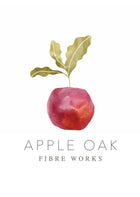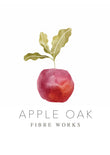
A natural dye often only really shines when its brother, the mordant, is part of the plan.
5 products







A natural dye often only really shines when its brother, the mordant, is part of the plan.
Chemical name: Potassium Carbonate (K₂CO₃) | Grade: Textile | Use rate: 3–10%
No natural-dye studio is complete without potash (Pottasche in German). This alkaline powder (K₂CO₃) is slightly stronger than soda ash and is traditionally used to raise the pH of dye baths and indigo vats, scour cellulose fibres, and intensify plant yellows such as weld by increasing alkalinity.
💡 Note: This product was previously listed as Soda Ash (Sodium Carbonate). We have updated the listing to Potash (Potassium Carbonate) to reflect the correct material.
• Boost pH in indigo, woad, or fructose vats
• Add to your scouring bath
• Intensify weld yellow and other plant yellows
• Balance acidic dye baths when needed
• Material: Potash (Potassium Carbonate K₂CO₃)
• Function: pH enhancer & cellulose scour
• Dose: 30–100 g · L⁻¹ (3–10% owf) dissolved in hot water or dye liquor
• Compatibility: All natural dyes; indigo & woad vats
• Packaging: Resealable moisture-proof pouch
• Safety: Wear gloves & mask; store cool, dry, and away from acids
Dissolve the required potash in hot water (or directly into a hot dye bath) at 3–10%. Stir until clear, then add to the dye pot or fibre scour. For indigo vats, add potash after the pigment to adjust alkalinity before introducing a reducer.
Potash is strongly alkaline. Avoid inhaling dust and protect eyes and skin. Store sealed and dry; keep away from children and acids. Dispose of effluent according to local regulations.
💡 Tip: Pair potash with our Natural Indigo Powder or Indigo Kits for a complete dye setup.
| Feature | Potash (Potassium Carbonate, K₂CO₃) | Soda Ash or Sodium Carbonate, (Na₂CO₃) |
|---|---|---|
| Alkalinity | Stronger | Milder |
| Best for | Indigo & woad vats needing a high pH | Controlled pH adjustment & cellulose scouring |
| Fibre use | Suitable for all natural fibres | Ideal for cellulose (cotton, linen, hemp) |
| Effect on dyes | Boosts colour strength (like weld) | Brightens plant yellows like weld |
| Traditional use | Historic indigo vat additive | General scouring & pH adjustments |
| Substitution | Can be used instead of soda ash for stronger alkalinity | Gentler option if potash is too strong |
CREAM OF TARTAR ~ To change colour (PH indicator) and soften fibre
Cream of Tartar, also known as potassium bitartrate, is produced by fermenting grape juice. It is used to acidify the dye bath to effect a colour change, and in mordanting to soften wool fibers as well as slowing down the mordant uptake in a hot mordant bath.
Instructions:
In general Cream of tartar can be dissolved in the dye bath. It helps to lower the PH of the bath.
PH of Cream of tartar is 5.
A small amount of Citric Acid can make a big difference in adjusting the PH levels of various substances. It falls between lemon juice and Tartaric Acid in terms of strength and is a valuable tool in achieving desired levels of acidity in natural Dyeing.
Tartaric Acid, a byproduct of wine making, is a stronger alternative to Citric Acid. It is commonly used in natural dyeing to lower the pH to 1+ and intensify and brighten cochineal reds. Additionally, it serves as an antioxidant (E334) and is naturally present in grapes and bananas.
Chemical name: Sodium Carbonate (Na₂CO₃) | Grade: Textile | Use rate: 3–10%
No natural-dye studio is complete without soda ash (Soda in German). This alkaline powder (Na₂CO₃) raises the pH of dye baths and indigo vats, scours cellulose fibres such as cotton and linen, and brightens plant yellows like weld by increasing alkalinity.
💡 Note: Soda ash is milder than Potash (Potassium Carbonate), making it suitable for situations where a gentler pH adjustment is preferred. If you bought our 'Soda Ash' in the past, you would be looking for Potash, rather than this new Soda Ash listing.
• Boost pH in indigo, woad, or fructose vats
• Scour cotton, linen, hemp, and bamboo before mordanting
• Intensify weld yellow and other plant yellows
• Balance acidic dye baths when needed
• Material: Sodium carbonate (soda ash, Na₂CO₃)
• Function: pH enhancer & cellulose scour
• Dose: 30–100 g · L⁻¹ (3–10% owf) dissolved in hot water or dye liquor
• Compatibility: All natural dyes; indigo & woad vats
• Packaging: Resealable moisture-proof pouch
• Safety: Wear gloves & mask; store cool, dry, and away from acids
Dissolve the required soda ash in hot water (or directly into a hot dye bath) at 3–10%. Stir until clear, then add to the dye pot or fibre scour. For indigo vats, add soda ash after the pigment to adjust alkalinity before introducing a reducer.
Soda ash is strongly alkaline. Avoid inhaling dust and protect eyes and skin. Store sealed and dry; keep away from children and acids. Dispose of effluent according to local regulations.
💡 Tip: If you need a stronger pH adjuster, try our Potash (Potassium Carbonate K₂CO₃).
| Feature | Potash (Potassium Carbonate, K₂CO₃) | Soda Ash or Sodium Carbonate, (Na₂CO₃) |
|---|---|---|
| Alkalinity | Stronger | Milder |
| Best for | Indigo & woad vats needing a high pH | Controlled pH adjustment & cellulose scouring |
| Fibre use | Suitable for all natural fibres | Ideal for cellulose (cotton, linen, hemp) |
| Effect on dyes | Boosts colour strength (like weld) | Brightens plant yellows like weld |
| Traditional use | Historic indigo vat additive | General scouring & pH adjustments |
| Substitution | Can be used instead of soda ash for stronger alkalinity | Gentler option if potash is too strong |
We’re not fans of crowded inboxes either, so here’s what you can look forward to in our newsletters:
✨ Updates from the Academy – new workshops, courses, and events
🧶 News from the Dye House – behind-the-scenes, fibre stories, and inspiration
🛍 Shop highlights – fresh arrivals, special offers, and exclusive sales
And of course, you’re always in control — unsubscribe anytime with a single click at the bottom of any email.
As a little welcome gift, enjoy 5% off your first order in our webshop with the code WELCOMEPOP.
Happy making! 🌿

